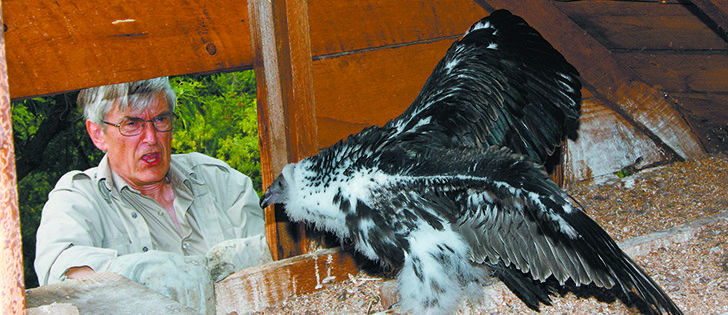Wing tagging | Initiative aims to gain insight into birds’ mating habits, lifespan and predators
DONALDA, Alta. — Despite their distinctive appearance and cameo appearances on animated cartoon shows, little is known about turkey vultures, especially in Alberta.
During August and September, Wayne and Alora Nelson drive thousands of kilometres through northeastern Alberta searching out the turkey vulture’s locations and banding their wings in hopes of learning more about the elusive bird.
In northeastern Alberta, turkey vultures like to nest in the attics of abandoned farm homes in out of the way locations, ideally surrounded by overgrown caragana hedges.
Read Also

Saskatchewan looks to expand trade in Indonesia
Saskatchewan intends to increase its agricultural partnership with Indonesia.
“They’re very secretive birds,” said Alora, after a day of banding six young vultures in three locations near Donalda.
The couple’s fascination with turkey vultures began 10 years ago when Wayne worked as a wildlife biologist with Alberta Environment in St. Paul.
Nelson and his colleagues began fielding an increasing number of queries about the birds.
They started searching out and noting turkey vulture nests, but it was after his retirement when turkey vultures took over the Nelsons’ lives.
Six years ago, they began wing tagging young birds. As of last fall, the Nelsons had banded 190 turkey vultures in northeastern Alberta.
By the end of this year they hope to add another 60 to the total. They have identified 25 sites with two chicks each and six sites with one chick each.
Birds they have banded have been spotted as far south as Venezuela and into Montana and Saskatchewan.
The couple bands birds in a region that extends roughly from Red Deer, north to Athabasca and Edmonton, and east to the Saskatchewan border. They pay for their own fuel and tagging equipment.
Wayne usually goes on a scouting trip in July to identify where chicks are located. Wayne then estimates the birds’ ages. The ideal time to wing tag turkey vultures is at 57 days old, when they have the fewest pinfeathers and don’t fly. Typically, the birds begin to fly between 60 and 65 days.
Catching the hissing chicks usually hidden in an attic of an old house with rotten floorboards isn’t easy, said Wayne.
“These kids love the corner. It’s really intimidating when they turn and face you and the kid lunges at you and you’re balanced on a floor joist,” he said.
Using a bent coat hanger, Nelson hooks the bird’s leg, and with the help of an assistant stuffs the hissing bird into a cloth bag, which is then taken to the main floor of the building for tagging. With a wing sticking out of the bag and the assistant hanging on to the bird’s feet, Wayne tries to find the best place to tag the wing.
“The hardest part is where to put the darn hole,” said Nelson with his head under the bird’s neck looking for the best spot to punch a hole for the tag.
Using a biopsy punch, Nelson punches a hole through the patagium, the equivalent of the skin by the elbow, and clicks in the distinctive yellow tag made from vehicle upholstery material. Alberta’s designated wing tags are yellow with black lettering. Saskatchewan’s are green with white letters.
In 1973, turkey vulture leg bands were banned because the metal corroded onto the birds legs.
Turkey vultures poop on their legs to cool off and the bands ate into the birds’ legs.
Wayne also takes wing and tail feather measurements, foot and leg measurements and plucks a tail feather for future DNA analysis. He hopes one day a university grad student will take his data and further study the turkey vultures. Mug shots of each bird are taken.
Little is known about turkey vultures, including their mating habits, life span and predators.
“The kids are little hellions and will bite you. The worst an adult will do is upchuck and smell. Any predator will say I don’t want anything to do with these upchucking and hissing things,” he said.
Adults can vomit a cereal-bowl-sized amount for chicks to eat.
Wayne believes the increase in known nesting locations result from more awareness and more birds moving northward and nesting in northern Alberta.
“They’re slowly moving farther north,” he said, adding he will be happy when they find a nesting pair, already tagged with their yellow wing tags.
“That would be remarkable.”















